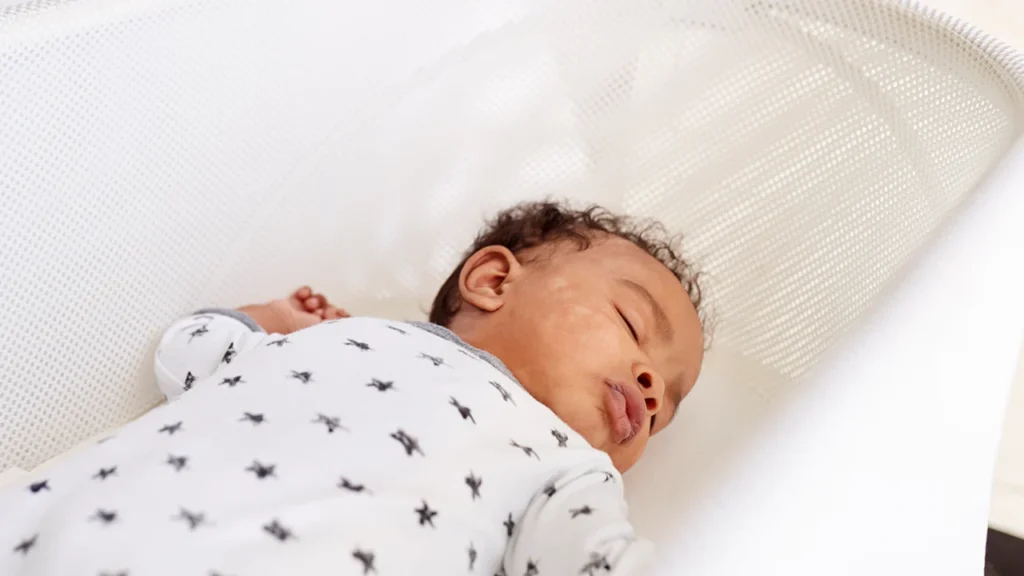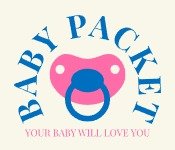Ensuring your baby sleeps safely is a top priority for parents and caregivers. Proper sleep practices can significantly reduce the risk of Sudden Infant Death Syndrome (SIDS) and other sleep-related accidents. This guide provides evidence-based recommendations for creating a safe sleep environment for your baby.

1. The ABCs of Safe Sleep: Alone, on the Back, in a Crib
A: Alone
Babies should sleep in their own sleep space, free from pillows, blankets, toys, or crib bumpers. Room-sharing (not bed-sharing) is recommended for at least the first 6 to 12 months.
- Room-sharing benefits: Reduces the risk of SIDS by up to 50%.
- Avoid bed-sharing: Adult beds pose risks such as suffocation, entrapment, and overheating.
B: On the Back
Always place babies on their backs to sleep, for naps and at night, until their first birthday.
- Why it matters: Sleeping on the back reduces the risk of SIDS significantly.
- Tummy time: Supervised tummy time during the day helps strengthen neck and shoulder muscles and prevents flat spots on the head.
C: In a Crib
Use a firm sleep surface, such as a crib, bassinet, or play yard, that meets current safety standards.
- Crib safety: Ensure the crib mattress fits snugly with no gaps, and remove any soft bedding.
- Avoid inclined sleepers: Devices like rockers and swings are not safe for unsupervised sleep.
2. Safe Sleep Environment
Creating a safe sleep environment involves more than just the crib. Here are key tips:
Firm Mattress and Fitted Sheet
- Use a firm mattress covered with a fitted sheet designed for the sleep space.
- Avoid soft bedding such as quilts, sheepskins, or loose blankets.
Temperature Regulation
- Dress the baby in sleep sacks or wearable blankets instead of loose blankets.
- Keep the room at a comfortable temperature, typically between 68-72°F (20-22°C).
- Avoid overheating by checking for signs like sweating or a hot chest.
Pacifier Use
- Offering a pacifier during naps and bedtime can reduce SIDS risk.
- If breastfeeding, wait until breastfeeding is well established before introducing a pacifier (usually around 3-4 weeks).
No Smoking Environment
- Ensure the baby’s environment is smoke-free. Exposure to smoke increases the risk of SIDS.
3. What to Avoid
Bed-sharing
While room-sharing is beneficial, bed-sharing poses risks of suffocation or entrapment.
- Risk factors: Soft bedding, parental smoking, or sleeping on a couch or armchair significantly increase risks.
Soft Bedding and Bumpers
- Avoid crib bumpers, even breathable ones. They pose suffocation and entanglement hazards.
- Keep the crib bare: No pillows, stuffed animals, or comforters.
Inclined Sleepers and Sitting Devices
- Products like car seats, swings, and bouncers are not designed for routine sleep.
- Babies should always sleep on a flat, firm surface.
4. Breastfeeding and Safe Sleep
Breastfeeding has been shown to reduce the risk of SIDS.
- Breastfeed as long as possible and practice safe sleep measures simultaneously.
- After nursing, ensure the baby is returned to their crib or bassinet.
5. When to Transition to Different Sleep Practices
As babies grow, sleep practices evolve:
- Rolling over: Once the baby can roll over independently, continue placing them on their back but allow them to find their own sleep position.
- Transition to a crib: Move from a bassinet to a crib when the baby exceeds weight limits or becomes too active.
6. Emergency Preparedness and Monitoring
- Baby monitors: Use video or audio monitors to check on the baby without being in the same room.
- CPR training: Caregivers should be familiar with infant CPR in case of emergencies.
7. Common Myths About Baby Sleep Safety
- Myth: Babies sleep better on their stomachs. Fact: Back sleeping is safer and reduces SIDS risk.
- Myth: Babies can’t breathe well on their backs. Fact: Healthy babies have reflexes to protect their airways.
Conclusion
Practicing safe sleep habits is essential for your baby’s health and well-being. Always follow the ABCs—Alone, on the Back, in a Crib—and create a safe sleep environment free from hazards. By adhering to these guidelines, you can reduce the risk of SIDS and ensure your baby sleeps safely and soundly. For personalized advice, consult your pediatrician.
